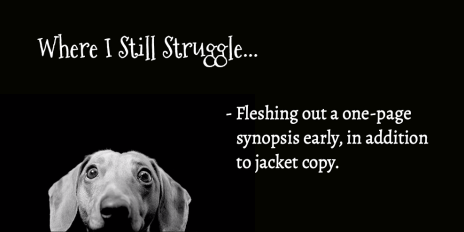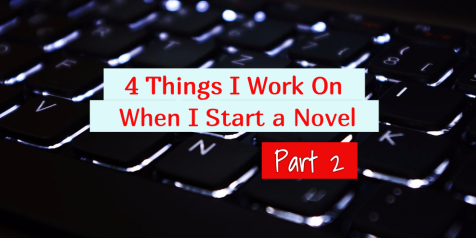
Last week, I blogged part one of this topic. Please check it out, if you haven’t already, because the list below piggybacks on part one.
Here are four more things I work on when I start writing a novel.
1. “Stuff That Can Go Wrong” list
I created this concept after banging my head over ways to create tension in a story. I heard critique partners say, “Ramp up the conflict” or “Raise the stakes.” But I couldn’t figure out how.
Then I thought, what are some of the worst things that could go wrong with this character? And voila, the aptly titled, Stuff That Can Go Wrong list was born.
With a WIP, I work on this list after I’ve sorted out the Goal-Motivation-Conflict of the story. It’s an unedited, no-holds-barred, rambling mess of ideas that keeps the protagonist’s bum on the hot seat. It also helps me identify key turning points for the plot.
This step has become one of my favorite parts of the writing process.

2. “Choices That Characters Make” list
This goes hand-in-hand with the section above. It’s a list of actionable steps the protagonist could take to achieve their goals.
Creating characters who are too passive has been an issue that I’ve had to work on over the years. This step has helped me develop characters who are more active.
I also discover subgoals, which are a great way of ratcheting up conflict as a character works toward their main goal. Between this step and the one above, I usually have enough to create a loose outline.

3. One sentence summary
After I finished writing a previous book, I started working on its’ one sentence summary. Well, it was more like a run-on sentence summary separated by lots of semi-colons.
That was a clear indicator that something wasn’t right.
My story was too complicated and convoluted to boil down to one sentence. I was trying to do too much. It was really two or three books, not one. Lesson learned.
It’s more efficient to nail down the one sentence summary before writing the book. If the one sentence summary is hard to write, or not compelling, it could mean that the book needs work, the book’s plot is too complex, or the characters’ goals aren’t clear. It’s better to figure that out sooner rather than later.

4. Jacket copy
I love reading jacket copy and book descriptions on Amazon. It’s the hook that lures me in to click the Buy button.
Working on the jacket copy for my WIP takes me out of the writer’s perspective and into the reader’s shoes. It helps me realize if my story doesn’t have a hook. And fast.
Jacket copy also serves as an imaginary fence for the story. It keeps me from veering too far as I write. It’s also a get-hype tool. Having good jacket copy with a cool hook gets me pumped as I work through the drafts of my book.

How to Write a One-Page Synopsis by Writers Write gives a fantastic breakdown of what to put in paragraphs, one, two, and three.
Also check out my post, Writing a Novel Synopsis, a Book’s Highlight Reel
Do you have anything to add, or thoughts about the list above?

Thanks for these, I especially like number 1. – turning advice around into a list of pitfalls – before it’s too late to fall into them!. I do character bios for similar reasons – so they’re rounded ‘real’ people on the page, but this looks like an interesting twist on that.
LikeLiked by 1 person
Character bios are something else I need to work on. I should add it to the list. 🙂
LikeLike
Reblogged this on Ann Malley and commented:
Are you still struggling with that new novel? Then check out Part 2 in René Penn’s “4 Things I Work on When I Start a Novel.” You don’t want to miss it.
She’s that good!
Write on.
LikeLiked by 1 person
Thanks, Ann! 🙂
LikeLike
I like your list. I also work on character voices. Sometimes I just journal a conversation with each character to discover their attitudes and speech quirks.
LikeLiked by 2 people
Ooooh! I love that. Great idea. And I’m totally stealing it! 😉 Thanks for sharing.
LikeLike
This is another GREAT list! Thank you so much for sharing, I know this will help me. All of these steps are awesome but I’m particularly interested in the first two, the lists of stuff that can go wrong and character’s choices. I will be employing this today perhaps. 😀 Thanks!
LikeLiked by 1 person
Thanks! I’m glad you found it helpful. Wishing you success with your manuscript! 🙂
LikeLiked by 1 person